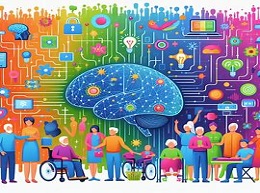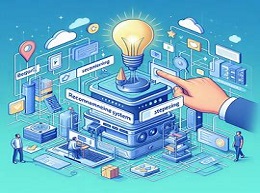Neuro-Inclusive Design: Making AI Accessible to All

Embracing Neurodiversity in AI Design
As artificial intelligence (AI) continues to shape our digital landscape, ensuring inclusivity and accessibility for all users is paramount. Neuro-inclusive design, a concept rooted in embracing neurodiversity, focuses on creating AI systems that cater to the diverse needs and preferences of individuals with varying cognitive abilities. In this article, we explore the significance of neuro-inclusive design in democratizing AI and fostering innovation, accompanied by compelling examples.
Understanding Neurodiversity
Neurodiversity acknowledges the natural variation in human neurological traits and emphasizes the value of diverse cognitive perspectives. Individuals with autism, ADHD, dyslexia, and other neurological differences possess unique strengths and capabilities that can enrich our understanding and utilization of AI technologies. By embracing neurodiversity, we can unlock new possibilities for innovation and create AI systems that accommodate the needs of a broader spectrum of users.
Designing for Accessibility
Neuro-inclusive design encompasses a range of strategies aimed at making AI technologies more accessible and user-friendly for neurodiverse individuals. For instance, incorporating customizable user interfaces and adaptive features allows users to tailor the AI experience to their specific preferences and sensory sensitivities. Providing clear and concise instructions, along with visual aids and alternative communication channels, enhances comprehension and usability for users with diverse cognitive profiles.
Enhancing User Experience
Neuro-inclusive design goes beyond mere accessibility; it strives to enhance the overall user experience by optimizing AI interfaces for clarity, simplicity, and intuitive navigation. For example, text-to-speech and speech recognition technologies enable users with dyslexia or language processing difficulties to interact with AI systems more effectively. Similarly, predictive text algorithms can assist users with ADHD or executive function challenges by offering suggestions and minimizing cognitive load during input tasks.
Empowering Neurodiverse Talent
Embracing neurodiversity in AI design not only benefits end-users but also fosters a more inclusive and innovative work environment. Companies that prioritize neuro-inclusive practices attract and retain neurodiverse talent, leveraging their unique perspectives and problem-solving abilities to drive creativity and breakthroughs in AI development. By embracing diverse voices and experiences, organizations can create AI solutions that resonate with a broader audience and address a wider range of societal needs.
Case Studies in Neuro-Inclusive AI
1. Microsoft's Seeing AI: Microsoft's Seeing AI app uses computer vision technology to assist individuals with visual impairments in navigating the world around them. By providing real-time audio descriptions of people, objects, and text, Seeing AI empowers users to access information and interact with their environment more independently, enhancing their overall quality of life.
2. Google's Live Transcribe: Google's Live Transcribe app utilizes speech recognition and natural language processing algorithms to transcribe spoken words into text in real-time. This accessibility feature benefits users who are deaf or hard of hearing, allowing them to participate in conversations and engage with spoken content more effectively, whether in-person or virtually.
Embracing Diversity in AI Design
In conclusion, neuro-inclusive design plays a crucial role in democratizing AI and ensuring that technology remains accessible to all individuals, regardless of their cognitive differences. By embracing neurodiversity and prioritizing inclusivity in AI development, we can create more equitable and empowering experiences for users across the neurodiversity spectrum. As we continue to advance AI technologies, let us strive to cultivate a culture of empathy, diversity, and innovation, where everyone has the opportunity to contribute and thrive in the digital age.














